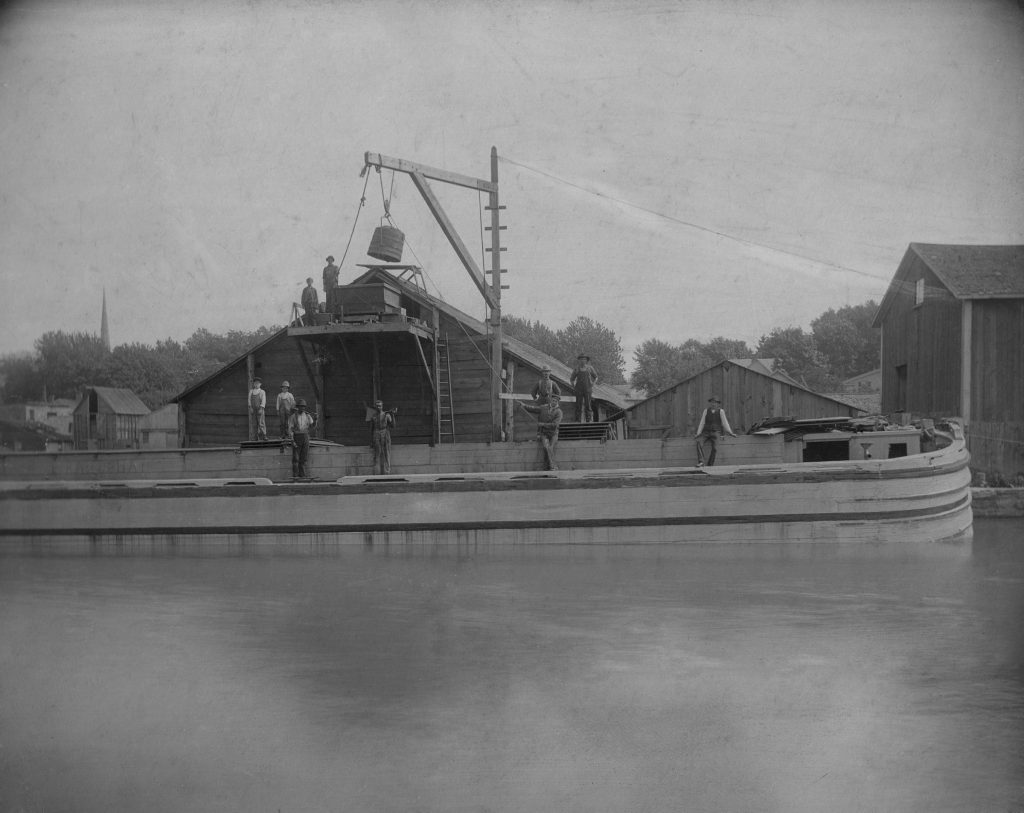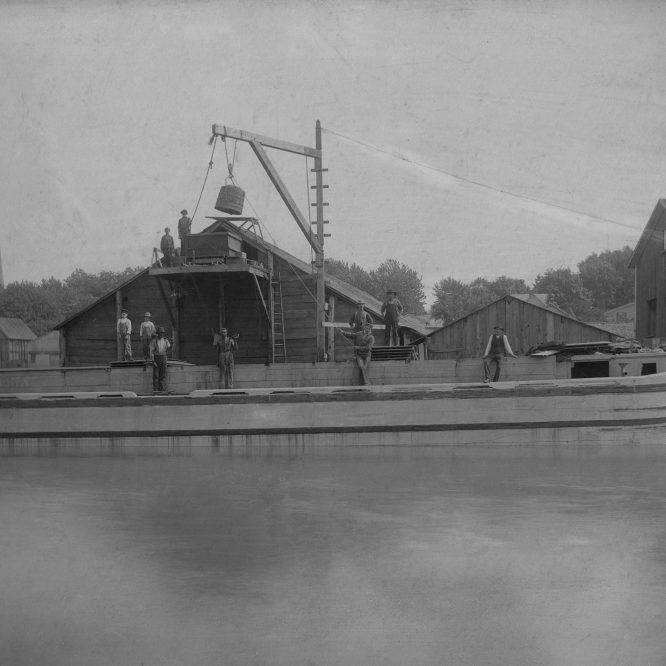Vol. 5, No. 8
This photograph shows John Howard’s Coal Yard, located at the “foot” of North Clinton Street on the south side of the Erie Canal around 1904/05. Born August 23, 1868 at Albion, Howard would eventually enter the business that his father William Alanson Howard started in 1870. The coal sheds in this image were likely constructed around 1873.
According to a 1903 business directory, several other coal yards were operating in Albion. Morgan & Linson and Ezra Skinner both operated yards on Clinton Street near the New York Central Railroad crossing while Charles Porter and the Shourds Brothers operated yards in the vicinity of East Bank and Platt streets. In this particular operation, a packet boat delivered coal by way of the Erie Canal. When the boat docked on the south side of the Canal, a team of workers shoveled coal into a large bucket which was then hoisted up to a second-story opening. A man standing on the upper platform would trigger a rope that dumped the bucket into a chute, sending the coal into the shed. A group of laborers inside would then distribute coal into separate bins where it could be loaded into wagons and delivered to homes and businesses.
Coal was a popular fuel source during the 19th and early 20th centuries. When the court house was constructed in 1858, a central heating system comprised of two coal stoves was installed in the basement that distributed warm air throughout the building. For homeowners, central heating systems like that were too expensive for installation in most residences but coal stoves quickly became the primary heating source for most homes by the time this photograph was taken.
According to national statistics, the United States produced 9 million tons of anthracite coal and 6 million tons of bituminous coal the year after the central heating system was installed in the Court House. By 1899, coal production had increased to over 60 million tons of anthracite and 193 million tons on bituminous coal, or about 3.34 tons of coal per capita. Pennsylvania led the U.S. in coal production, which would have shipped to Western New York via railroads. Illinois and Ohio produced over 21 million tons of coal in 1889, which would have shipped by way of the Great Lakes and Erie Canal. “King Coal” became the leading provider of domestic and industrial fuel by the turn of the century.
The man standing in the center of the photograph, wearing a gray felt hat and suspenders, is John Howard. Readers will notice two African American men standing on the packet boat with coal shovels on their shoulders as well as several younger men standing on deck. As a young man, Henry Austin Spencer lived with the Howard family and worked as an errand boy at the coal yard. As an adult, Spencer became the first African American student accepted into the University of Rochester, was a pallbearer at Frederick Douglass’ funeral, and worked as a clerk in the NYS Assembly.


